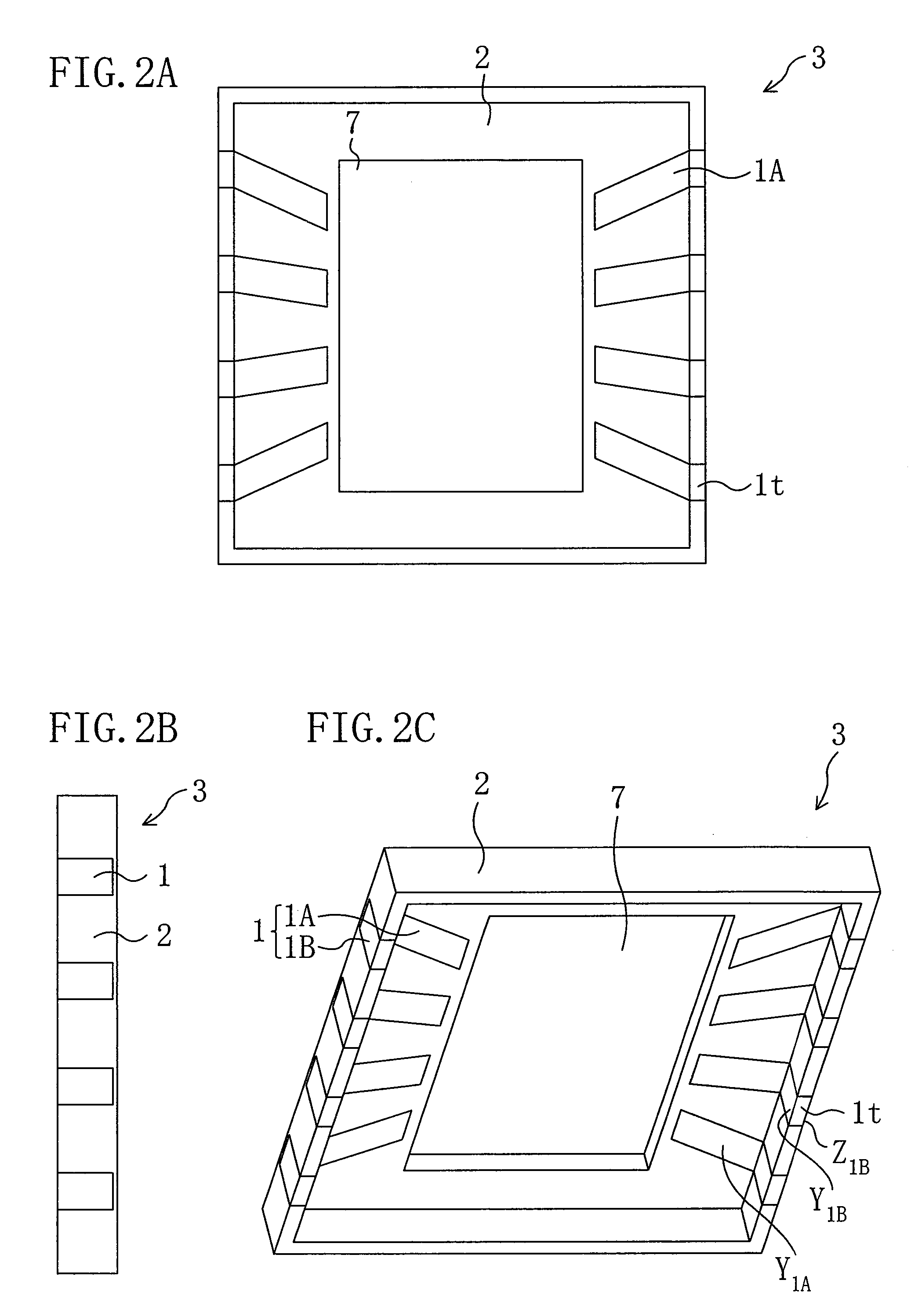Optical device and manufacturing method thereof and semiconductor device
a manufacturing method and semiconductor technology, applied in semiconductor devices, solid-state devices, television systems, etc., can solve the problems of defective semiconductor devices, more disadvantageous optical devices in heat release efficiency, and failure of control circuits, so as to improve overall heat release efficiency of semiconductor elements, prevent defective semiconductor devices, and improve the effect of overall heat release efficiency
- Summary
- Abstract
- Description
- Claims
- Application Information
AI Technical Summary
Benefits of technology
Problems solved by technology
Method used
Image
Examples
first embodiment
[0056]Hereinafter, an optical device according to a first embodiment of the invention will be described with reference to FIGS. 1A through 1C. FIGS. 1A through 1C are diagrams showing a structure of the optical device of the first embodiment. FIG. 1A is a plan view of the optical device when viewed from the back side of an optical element. FIG. 1B is a cross-sectional view taken along line Ib-Ib in FIG. 1A. FIG. 1C is a perspective view of the optical device when viewed from the front side of the optical element.
[0057]As shown in FIG. 1B, the optical device of this embodiment mainly includes a base 3 and an optical element 4. The base 3 has a through hole 7 in the center and includes leads 1 and a resin 2. The optical element 4 is provided under the base 3 so as to correspond to the through hole 7, and has a light detecting region 5 in the center. The leads 1 of the base 3 are respectively connected to electrode pads on the optical element 4 through bumps 6.
[0058]As shown in FIG. 1B...
second embodiment
[0069]Hereinafter, an optical device according to a second embodiment of the invention will be described with reference to FIG. 3. FIG. 3 is a cross-sectional view showing a structure of the optical device of the second embodiment.
[0070]As shown in FIG. 3, the optical device of this embodiment further includes a thin plate body 8 and a transparent member 10 in addition to the structure of the first embodiment. The thin plate body 8 is provided under the optical element 4 through a bonding member 9, and the transparent member 10 is provided in the through hole of the base 3 through an adhesive 11.
[0071]The thin plate body 8 has a thickness of, for example, 200 μm to 400 μm. The thin plate body 8 is made of, for example, ceramic. The thin plate body 8 may alternatively be made of other materials such as a metal plate. For example, an adhesive is used as the bonding member 9. Other materials such as an adhesive sheet may alternatively be used as the bonding member 9.
[0072]The transpare...
third embodiment
[0108]Hereinafter, a camera module according to a third embodiment of the invention (a camera module including the optical device of the invention) will be described. A camera module including the optical device of the first modification of the second embodiment will be described below as an example. FIG. 9 is a cross-sectional view showing a structure of the camera module of the third embodiment.
[0109]The “camera module” herein indicates various types of equipments such as a digital still camera, a mobile phone camera, a video camera with mobile phone, an on-board camera, a surveillance camera, a video camera, a medical camera, a broadcast camera, a webcam, a camera with video phone, a game camera, an optical mouse, a DVD (Digital Versatile Disc) drive, and a CD (Compact Disc) drive. Note that when the optical device of the invention is used in the camera module, the optical element of the optical device is a light receiving element such as an image sensor.
[0110]As shown in FIG. 9,...
PUM
 Login to View More
Login to View More Abstract
Description
Claims
Application Information
 Login to View More
Login to View More - R&D
- Intellectual Property
- Life Sciences
- Materials
- Tech Scout
- Unparalleled Data Quality
- Higher Quality Content
- 60% Fewer Hallucinations
Browse by: Latest US Patents, China's latest patents, Technical Efficacy Thesaurus, Application Domain, Technology Topic, Popular Technical Reports.
© 2025 PatSnap. All rights reserved.Legal|Privacy policy|Modern Slavery Act Transparency Statement|Sitemap|About US| Contact US: help@patsnap.com



